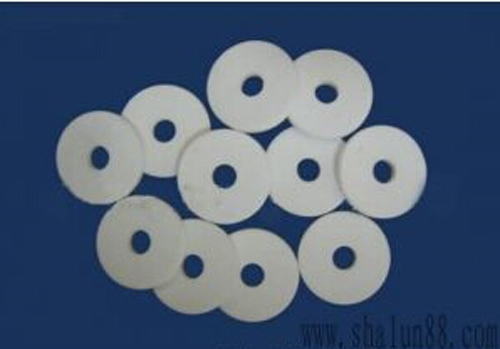
The article discusses different choice of grinding wheels for stainless steel grinding.

Abrasive
White fused alumina has a good cutting performance and self-sharpening action, so it is suitable for martensite and ferrite stainless steel grinding; single crystal fused alumina is greater in hardness and toughness than white fused alumina, so it is suitable for austenite and ferrite stainless steel grinding; microcrystalline fused alumina has a good self-sharpening action, high intensity, good toughness, and is easy to produce a sharp micro blade, so it is applicable to stainless steel grinding, meanwhile, in can reduce galling, burn, and the grinding surface roughness. While grinding a stainless internal hole, is the grinding wheel's diameter is short, then the number of times each abrasive grain gets involved in grinding is frequent. So in such case, microcrystalline fused alumina and single crystal fused alumina are suggested. Fused alumina-zirconia is also effective for it has a high grinding efficiency and the workpiece is not easy to be burnt. When grinding austenite stainless steel, sharp silicon carbide grinding wheel or synthetic diamond grinding wheel can be employed to improve grinding efficiency. When grinding martensite stainless steel whose hardness is over 275HBW, CBN grinding wheel is a right choice.
Grit Size
The sizes of abrasive have a direct effect on the surface roughness of stainless steel. Usually a fine-grit grinding wheel can achieve a smaller roughness height of the grinding surface. however, the stainless steel has a high toughness that if a fine-grit grinding wheel is adopted, the abrasive dust is prone to get blocked and make the grinding wheel lose its grinding ability. So a coarse grinding wheel should be selected. Experiments say that when grinding stainless steel, medium-sized grit (36#, 46#, 60#) grinding wheels are proper, 36#、46# for rough grinding and 60# for precision grinding. Sometimes 46# or 60# grinding wheel for rough grinding and precision grinding simultaneously. A rough-grit grinding wheel is proper for internal grinding and face grinding because the contact arc between the grinding wheel and the workpiece is larger.
Bonding Agents
Since stainless steel has a high toughness, high temperature strength, and a high grinding force, the grinding wheel is required to have a high intensity to bear the impact load. As a result, most of the grinding wheels for stainless steel use ceramic bonding agent, which has a good heat resistance and resistance to corrosion. Ceramic bonding agent can not only hold the cutting and grinding performance of the abrasive to achieve higher productivity, but also can bear larger impact load. It is frequently used in grinding wheel with large diameter. Resin bonded grinding wheels can be used to grind stainless steel workpiece. Resin bonding agent is elastic, but it can not be used in alkaline solution or under temperature higher than 150 degrees centigrade. So it needs cooling fully. When grinding the internal hole of acid-resistant stainless steel, resin bonded grinding wheels can help improve the surface quality and avoid burn.
Hardness
The hardness of grinding wheels for stainless steel should be less harder than grinding wheels for carbon steel in case that the grinding wheels have a good self-sharpening action. If the grinding wheel's intensity is too high, the dulled abrasive grains are not easy to fall off, which may lead to grinding wheel block. Besides, grinding wheel's hardness also affect the adhesion of abrasive grains and stainless steel. The higher the hardness of the grinding wheel is, the more serious the adhesion degree of the grinding wheel will be. Certainly, the grinding wheel's hardness cannot be too low, which may result in fast abrasion.
Organization
Since stainless steel has a high intensity and strong adhesion force, to avoid grinding wheel block, the grinding wheel should be loose, No.5 to No.8, in general. When the requirement for surface roughness is low or it is mold grinding, tight grinding wheel is appropriate.
Author: Liwei Chu
Copyright: iAbrasive.com--Abrasives & Diamond Tools Market